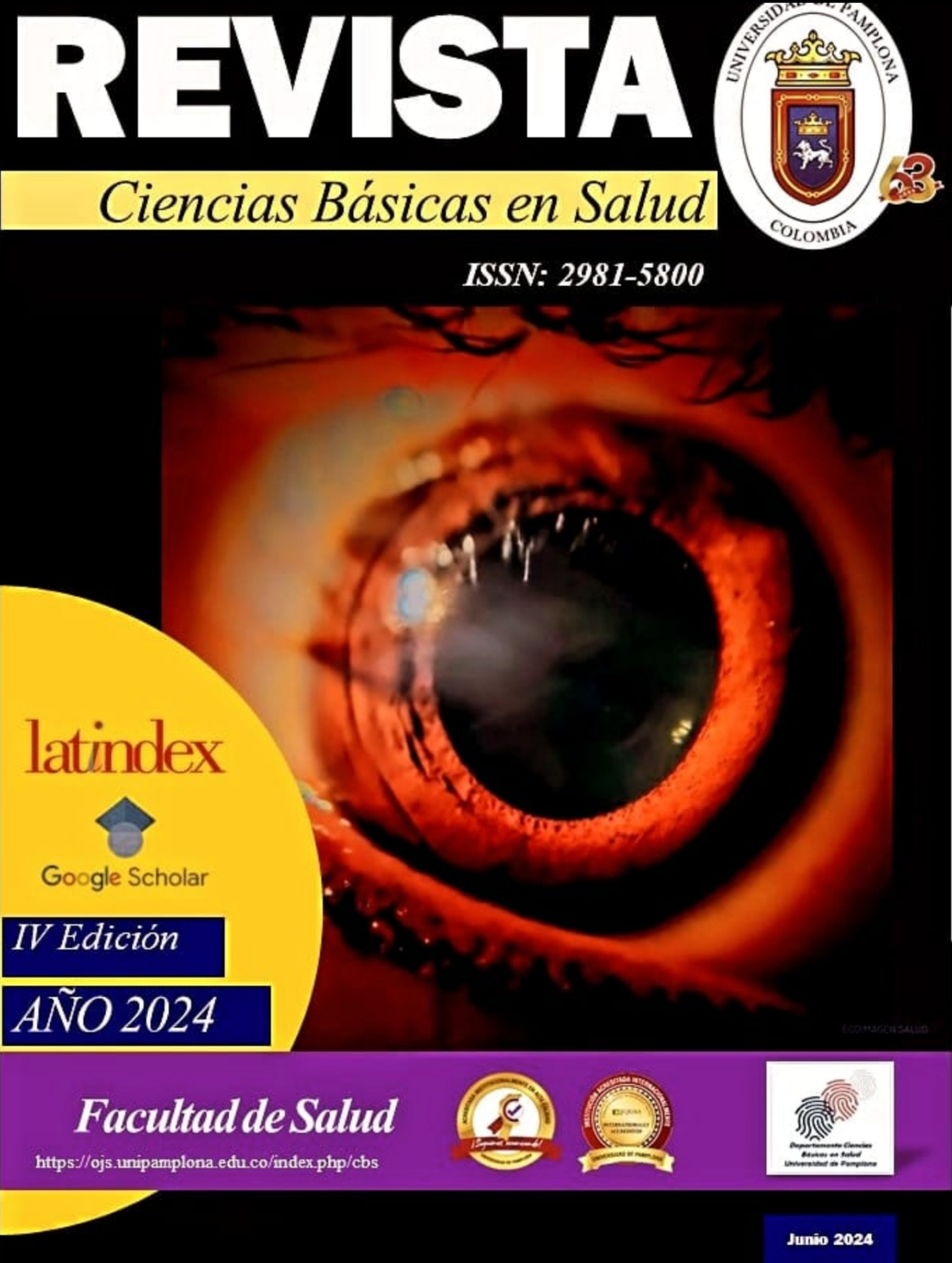Circadian disruption and its relationship with obesity in the workers of a private health institution in Cúcuta
DOI:
https://doi.org/10.24054/cbs.v2i2.2923Keywords:
Circadian cycle, sleep-wake cycle, obesity, overweightAbstract
Introduction: The human body has a biological clock which is a natural time device that controls the circadian cycle. It is made up of physical, mental, and behavioral changes, and responds to light. When this is affected by factors such as not sleeping well, there are usually alterations at the hormonal and digestive levels, among others, which can lead a person to trigger obesity, and this leads to an increased risk factor for cardiovascular diseases. Objective: To evaluate the relationship between the circadian disruption of the sleep-wake cycle with the risk of developing obesity in workers of a private health institution in the year 2023. Methodology: An observational, cross-sectional, descriptive study will be conducted, not experimental. The population that will participate in the research will be health professionals from a private health institution in the city of Cúcuta. The Horne and Östberg morning-evening questionnaire and anthropometric measurements were used. Results: Regarding the prevalence of overweight, it was 42.24% and obesity 14.66%. On the other hand, regarding circadian disruption, it was shown that 56.9% have a moderate morning chronotype and 34.38% have an intermediate chronotype, which means that most of them perform better in daytime work shifts. Finally, it was evident that the few people who had an evening chronotype do not have problems with overweight and obesity, unlike the people whose chronotype was intermediate or morning in whom there are problems of overweight in 42.6% and obesity in 14.78. %. Conclusion: Most health workers in the studied population who have alterations in the circadian cycle have problems with overweight (42.24%) and obesity (14.66%).
Downloads
References
Alarcón, R. A. Y., Corzo, L. T., Loor, C. P., & Asanza, K. C. (2021). Estilo de vida, estado nutricional y riesgo cardiovascular en trabajadores de la salud. Dialnet
Alfonso, M. M. C. (2020). El trabajo nocturno y su influencia en la aparición de los riesgos cardiovasculares de trabajadores evaluados en la Clínica Tataje de Ica, año 2019. Repositorio Universidad Alas Peruanas
Agudelo, A., & María, M. B. D. (2019). Prevalencia y factores asociados al sobrepeso/obesidad en una población en Medellín-Colombia. Repository Universidad del Rosario
Brigith, M. M., & Cindy, T. C. (2021). Influencia del horario laboral sobre los hábitos alimentarios del personal que trabaja por turnos en el área de la salud de la ciudad de Cartagena De Indias, Colombia. Repositorio UNISINU Cartagena
Cobos K., Peña S., Ochoa A., Ordoñez J. (2022). Prevalencia de sobrepeso/obesidad y su relación con la calidad de sueño en profesionales de la salud del Hospital José Carrasco Arteaga. FACSalud
Carrascal-Botello, L. A., Chacón-Peñaranda, J. S., Eduardo, D. H. C., & Gómez-Velasco, J. A. (2023). Nivel de actividad física, características sociodemográficas y obesidad de los trabajadores de una empresa del sector industrial de Cúcuta, 2022. Repositorio Universidad de Santander
De León Arcila, R. (2018). Trastornos del sueño y anormalidades del ciclo circadiano como factores asociados a la obesidad. Medigraphic
Gamboa, Y. L., Ruiz, M. E. P., & Yanez, Y. L. A. (2021). Relación entre los ritmos circadianos y la obesidad. Dialnet
Hernandez A., Rivera L., Lopez M. (2021). Indicadores antropométricos y consumo alimentario del personal de salud según su turno laboral, cronotipo y calidad del sueño. Revistas Universidad del Rosario
Juan, C. F. A. V., & Jose, T. S. O. (2022). Fenotipo circadiano relacionado con obesidad y porcentaje de grasa corporal en población de la ciudad de Arequipa - 2022. Repositorio Universidad Católica de Santa María
Lidia, C. F. (2021). Crononutrición y obesidad: ¿Están relacionadas? Repositori Universidad de Lleida
Leon M., Moreno M. (2018). La turnicidad laboral como factor de riesgo cardiovascular. Repositorio Institucional de Documentos Universidad de Zaragoza
León-Samaniego, G. F., De Jesús Vásquez Espinoza, G., & Silva, J. S. B. (2020). Prevalencia de obesidad y dislipidemias, y su relación con la hipertensión arterial en trabajadores universitarios en Ecuador. Revista Salud y Bienestar Colectivo
Magdalena, E. C. C., & Comunitaria, N. y. S. (2019). Alteración del ritmo circadiano relacionado con el estado nutricional en el personal de salud del “Hospital general Marco Vinicio Iza”, ciudad Nueva Loja 2019. Repositorio Universidad Técnica del Norte
Romero, M. R. G., Martínez, A. F., Vivó, V. G., Enguix, J. F., Micó, L. M., & Belinchón, L. C. (2019). Trabajo nocturno e IMC en los profesionales de un hospital comarcal. Dialnet
Rosagro F. (2019). Cronotipo de los trabajadores del servicio de urgencias de un hospital general. Relación con ansiedad y depresión. Psiquiatria.com
Sánchez J., Ortiz M., Ramos L. (2020). Prevalencia de sobrepeso y obesidad en personal de salud de un centro de atención primaria en Bogotá, 2020. Universidad del Rosario
Sofia, G. E. D. (2017). Riesgo cardiovascular global en los trabajadores de la salud de la ips clínica metropolitana comfanorte de Cúcuta durante el segundo semestre del año 2016. Repositorio Universidad Francisco de Paula Santander
Downloads
Published
How to Cite
Issue
Section
License
Copyright (c) 2024 Revista Ciencias Básicas en Salud

This work is licensed under a Creative Commons Attribution-NonCommercial 4.0 International License.







